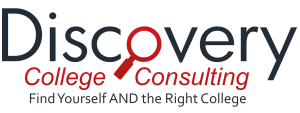 If you are a high school senior or the parent of one, you likely are aware of the problems that have plagued the new FAFSA since it became available at the end of December. Not only was the FAFSA’s release delayed by nearly three months, but there have been several technical glitches with the new form that have made it difficult, if not impossible, for some students and families to apply for financial aid.
If you are a high school senior or the parent of one, you likely are aware of the problems that have plagued the new FAFSA since it became available at the end of December. Not only was the FAFSA’s release delayed by nearly three months, but there have been several technical glitches with the new form that have made it difficult, if not impossible, for some students and families to apply for financial aid.
Furthermore, although the Department of Education said in December that colleges would receive students’ FAFSA information in late January, it announced on January 30 that colleges would not receive this information until March. Since most colleges release Regular Decision admissions decisions in late March, this means financial aid offices will either have to put together aid offers much more quickly than they are used to or send those offers after admissions decisions come out.
Rather than waiting on the FAFSA, some colleges are pursuing alternative ways to access applicants’ financial information. Colleges that require the CSS Profile in addition to the FAFSA can use the data from the Profile to provide financial aid estimates. But only a few hundred colleges, most of which are selective private schools, require the Profile. Some colleges that don’t use it have created their own financial aid applications in order to offer families estimates of the financial aid they will ultimately receive.
Such a strategy is risky, as colleges will have to wait until they receive students’ FAFSA information to give families a final aid award. A recent Inside Higher Ed article featured a few colleges that are using their own forms, and each is taking a slightly different approach. For example, St. Louis University “will guarantee all institutional aid in early packages unless families misreport their income in excess of $15,000.” Southwestern University “will guarantee the estimate procured from its completed student aid forms ‘as a baseline,'” so if a student’s FAFSA indicates they are entitled to more aid than what Southwestern’s own form indicated, the college will honor the higher amount.
Another way that colleges are responding to the FAFSA delay is by extending their enrollment deadlines. Traditionally, May 1 has been the date by which most colleges require admitted students to commit and pay an enrollment deposit. But since colleges may not be able to provide financial aid awards until April, some have already moved their deadlines later.
The National Association for College Admission Counseling has put together a directory of colleges that have extended their enrollment deadlines. There are over 400 institutions in the directory, but to see only those that have changed their deadlines, select “Yes” under the third drop-down menu. As of March 5, over 200 schools had extended their deadlines, with most being May 15 or June 1. The colleges on the list are a mix of public and private colleges across the country. Here in Colorado, the University of Colorado Boulder and Colorado State University Ft. Collins both recently announced that they had moved their deadlines to June 1.
Chances are, the list of institutions with extended enrollment deadlines will continue to grow. As students receive admissions decisions this spring, they should be careful to check when each college’s deadline is. Don’t assume that because one of your schools has a later deadline, that means they all do.





